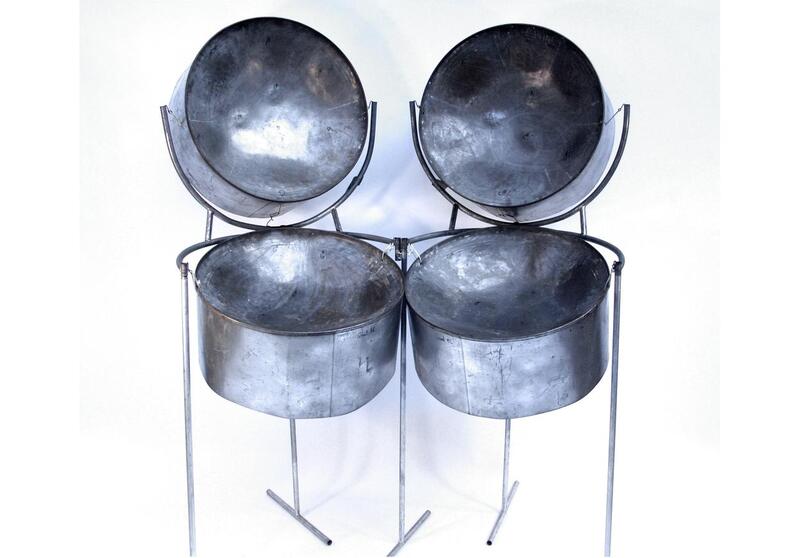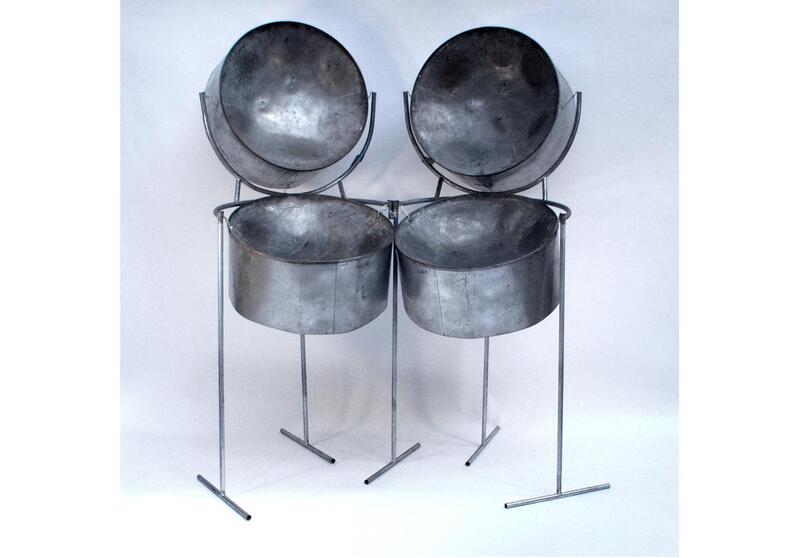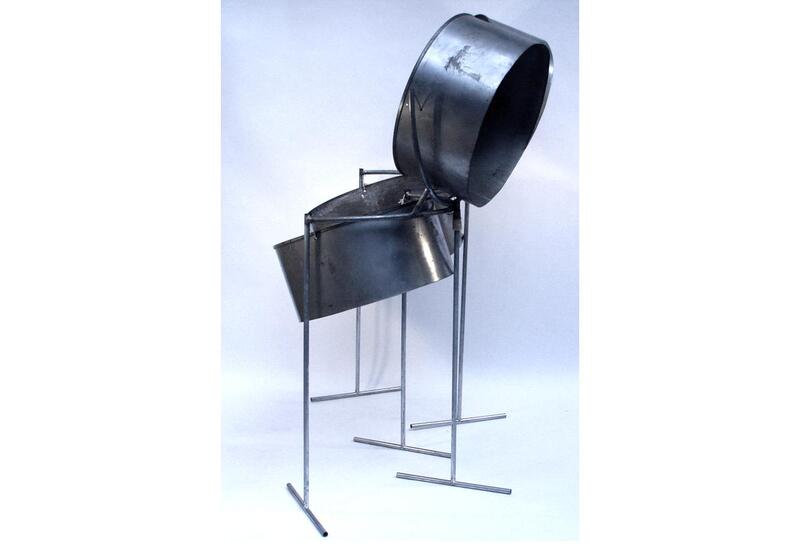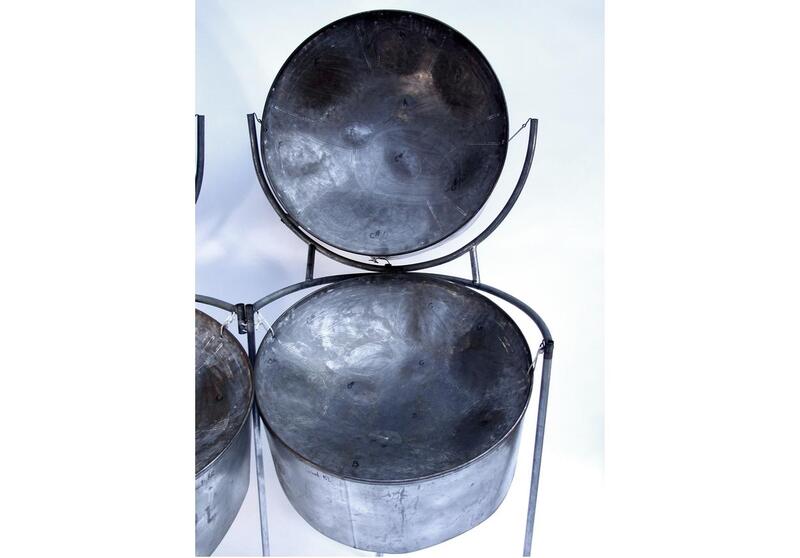Quadrophonics
Title
Video
Physical description
This instrument consists of four pans arranged in pairs, with two in a typical horizontal arrangement and two suspended vertically in front. The lowest notes found along the circumference of the bowl are U-shaped, while the higher octave notes are either oval or circular-shaped inside. Their “skirt” or side length is approx. 12-16 cm and they are played with moderately thick rubber mallets.
Historical background
The quadrophonics (or sometimes called “quads”) was invented by Rudolph Charles to cover the entire upper range of the ensemble (Blake, 119). According to another scholar, tuner Neville Jules developed a “quatro” pan in the late 1940s, however, one might theorize that his was an early version of the four-cello (Steumpfle, 43). Nevertheless, both theories point to the influence of the cuatro guitar, a four-stringed instrument used in local Venezuelan-influenced parang music. The quadrophonics have the most versatile function in the steel band, from melodic and harmonic support to countermelody, and thus require the more skilled players.
Tuning
Geography
Classification
Ensemble
Materials
Date/Era
Bibliography
Blake, F.I.R. The Trinidad & Tobago Steel Pan: History and Evolution. Port of Spain, Trinidad: Published by author.
Goddard, George “Sonny.” 1991. Forty Years in the Steelbands, 1939-1979. Port of Spain, Karia Press.
Steumpfle, Stephen. 1995. The Steelband Movement: The Forging of a National Art in Trinidad and Tobago. Philadelphia: Univ. of Pennsylvania Press.
Thomas, Jeffrey Todd. 1985. A History of Pan and the Evolution of the Steel Band in Trinidad and Tobago. M.A. Thesis. Middletown, CT: Wesleyan University.
Additional resources
Pan Trinbago
http://www.pantrinbago.co.tt



